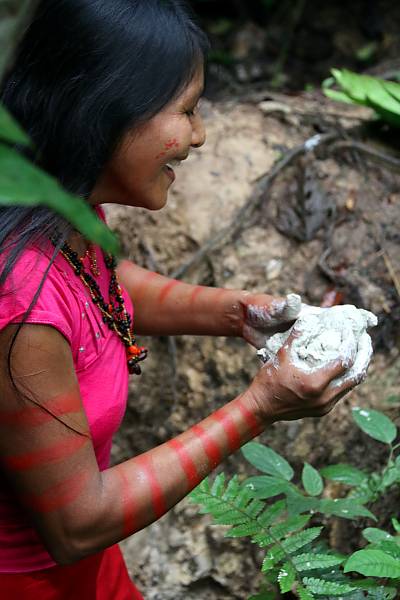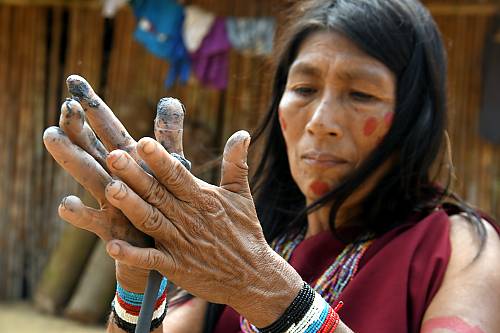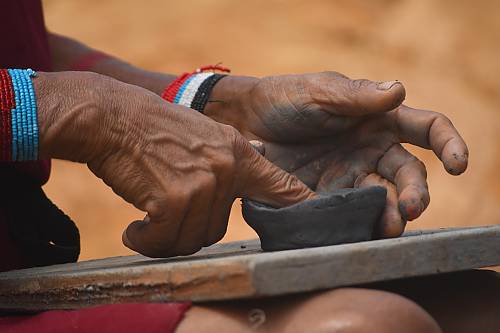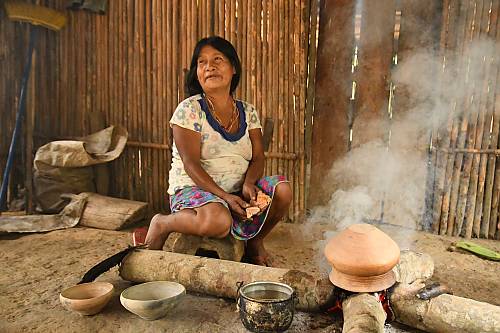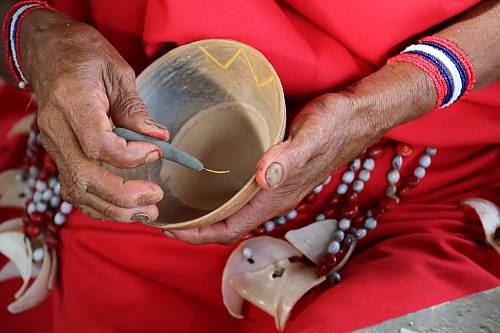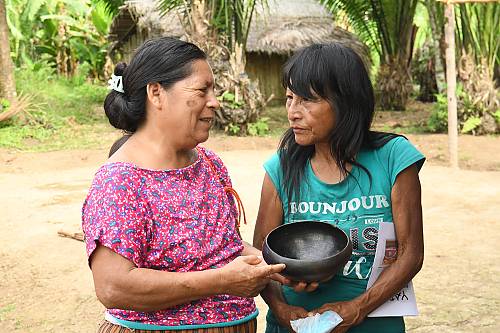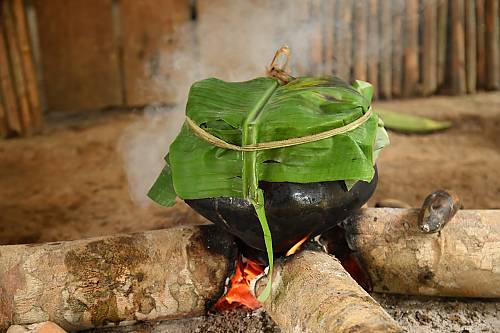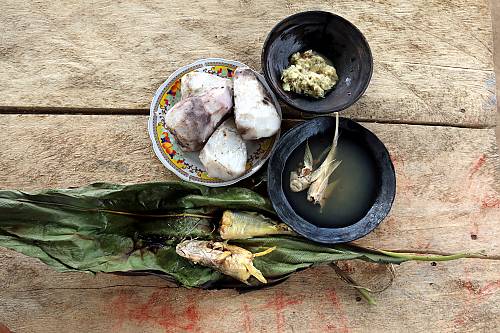Pottery-related values, knowledge, lore and practices of the Awajún people
Inscribed in 2021 (16.COM) on the Representative List of the Intangible Cultural Heritage of Humanity
The Awajún people of northern Peru view pottery as an example of their harmonious relationship with nature. The pottery preparation process comprises five stages: the collection of materials, modelling, firing, decorating and finishing. Each stage of the process has a meaning and associated values that are told in the people’s oral traditions. The process also entails the necessary skills and knowledge to create and decorate the pots. Artisans use specific tools, including grinding and polishing stones, a wooden board, a modelling tool and a paint brush made of human hair. The pots are decorated with geometrical patterns inspired by elements of nature such as plants, animals, mountains and stars. They are used for cooking, drinking, eating and serving food, as well as for rituals and ceremonies. But they also play an important social role. Seen as a means of expressing one’s personality, generosity and intimate life, the thousand-year-old practice has permitted the empowerment of Awajún women, who look after and sow the plants they use to make and decorate their pots. The main bearers of the Awajún pottery knowledge, lore and traditions are the Dukúg wisewomen, female elders who pass the practice on to other women in their families.

